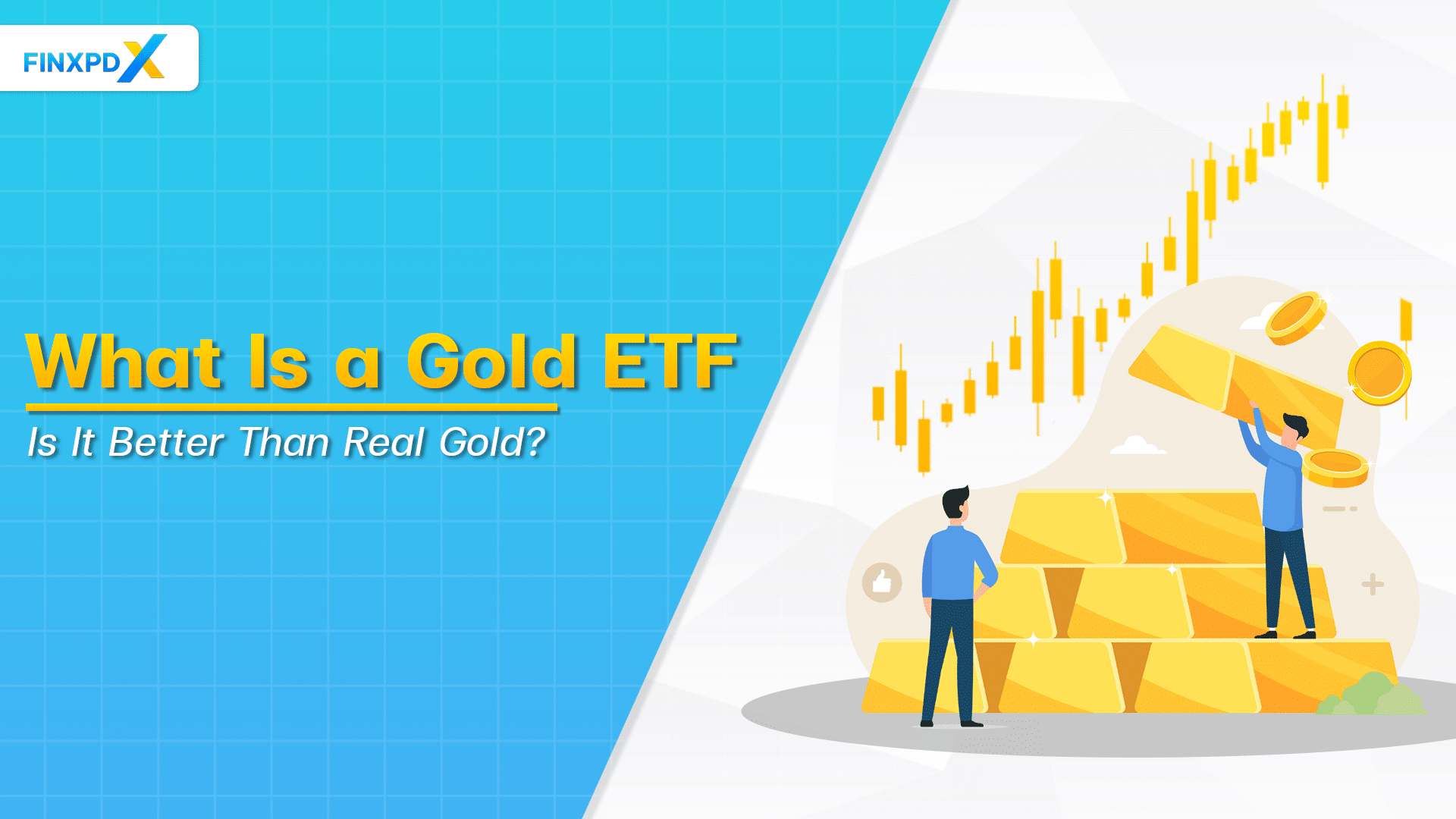Investing in the stock market offers a variety of ways to grow your money. One popular option is investing in Gold ETFs. This type of investment is attracting a wide range of people, from beginners to experts.
This article aims to be your comprehensive guide on everything you need to know about investing in gold ETFs. From understanding what is a gold ETF to comparing it with physical gold, and how to invest in it.
What Is a Gold ETF?
Gold ETF, standing for Gold Exchange-Traded Fund, is a revolutionary investment vehicle that offers the best of both worlds: the security of investing in gold and the convenience of stock trading. Unlike traditional methods, where one has to deal with the physical handling of gold bars or coins, a gold ETF investment allows you to invest in gold electronically.
It’s essentially a fund traded on the stock market, just like individual stocks. However, instead of owning a slice of a company, each share of a gold ETF investment represents ownership in a certain amount of gold bullion.
Key Takeaways
- A Gold ETF is a financial instrument that tracks the price of gold, and doesn’t require you to store or insure the metal.
- Liquidity and diversification are among the top benefits of investing in gold ETFs.
- Gold ETFs operate by tracking gold prices and can be bought or sold through a brokerage account.
Benefits of Gold ETF
Investing in gold ETFs comes with its own set of advantages. This section will explain why they are becoming increasingly popular among investors.
1. Liquidity
It offers one of the biggest advantages in terms of liquidity. They can be traded just like any other stock on the stock exchange, making buying and selling straightforward.
2. Cost-Effective
It helps you sidestep the costs associated with storing physical gold. This includes insurance and locker charges, which are often minimal or non-existent when you make an investment.
3. Tax Benefits
It generally has a lower capital gains tax compared to physical gold. This tax efficiency adds to their attractiveness as an investment option.
4. Portfolio Diversification
It offers excellent portfolio diversification. They are a great hedge against market volatility, helping to balance out risks in your investment portfolio.
5. Convenience
Its investment simplifies the investment process. From purchasing to storing, you don’t have to worry about issues like purity or safe storage; it’s all taken care of for you.
How a Gold ETF Works
This investment option is investment funds traded on stock exchanges, similar to individual stocks. They are designed to replicate the price movements of physical gold. Managed by professional asset managers, these funds ensure real-time tracking of gold prices.
You can buy or sell shares of a gold ETF during standard trading hours, just like you would with any other publicly-traded stock. This setup provides an accessible and straightforward way to invest in gold without dealing with the complexities of owning physical gold.
Differences Between Physical Gold and Gold ETF
It may be of interest to discern the distinctions between physical gold and gold Exchange Traded Funds (ETFs). Knowing these differences is crucial for making informed investment decisions. Here’s a comparison table to break it down for you:
| Features | Physical Gold | Gold ETFs |
|---|---|---|
| Ownership | You own the actual physical metal. | You own shares that represent gold assets. |
| Storage & Insurance | Required and usually involves additional costs. | Not required, as physical storage isn’t needed. |
| Liquidity | Might require a visit to a dealer to sell. | Easily bought and sold during trading hours. |
| Costs | May include storage fees and dealer spreads. | Generally lower fees and no spread. |
| Taxation | Varies depending on jurisdiction and type. | Treated like mutual funds, subject to capital gains. |
How to Invest in Gold ETF
You might be wondering how to diversify your investment portfolio. Knowing the right steps can make your investment journey smoother and more profitable. Here’s an in-depth look at the pivotal steps:
1. Open a Brokerage Account
To make an investment, you’ll first need to open a brokerage account if you don’t already have one. This account acts as a trading platform where you can buy and sell various financial instruments. To open an account, you’ll need to provide basic information like your name, address, and social security number. You’ll also need to agree to the brokerage’s terms and conditions.
2. Fund Your Account
After your brokerage account is set up, the next step is to deposit money into it. This is the capital you’ll use for buying shares of the gold ETF. You can usually fund your account via bank transfer, check, or sometimes even credit card. Some brokerages may have minimum deposit requirements, so make sure to check those details beforehand.
3. Place an Order
Once your account is funded, you can navigate to the trading section and place an order to buy the gold ETF. You generally have two options: a market order and a limit order. A market order executes immediately at the current market price, while a limit order will only execute if the ETF reaches the price you’ve set. Choose the type that aligns with your investment strategy.
4. Monitor and Manage
After the purchase, it’s important to monitor your investment regularly. Keep an eye on how the gold ETF performs in relation to the broader market and your investment goals. Depending on your strategy, you might choose to buy more shares, hold your existing ones, or sell. Some investors also set up automated alerts to inform them of significant price changes.
Tip💡: Invest a fixed amount at regular intervals to reduce market timing risk.
Conclusion
Gold ETFs are financial instruments that allow investors to gain exposure to gold without physically owning the metal. These ETFs offer benefits like liquidity, diversification, and ease of trading. Understanding its unique characteristics, as compared to physical gold, can inform better investment decisions.
However, it’s crucial to exercise due diligence, as gold ETFs are not without risks. These risks include market volatility, potential tracking errors, and fluctuations in the price of gold itself. Investors should be aware that market conditions can change rapidly, affecting the value of their investment.
FAQs
This investment is an exchange-traded fund that mimics the price of gold. It offers a convenient way to invest in gold without owning the physical metal.
It depends on the investment objectives and considerations of the individual. Gold ETFs offer liquidity, and convenience, and avoid issues related to storage and authenticity, which are associated with physical gold. However, physical gold can be held as a tangible asset and doesn’t rely on electronic trading platforms. Each has its own advantages and potential drawbacks.
It is usually considered collectibles for tax purposes. This may result in a higher capital gains tax compared to other investment vehicles. Always consult a tax advisor for personalized advice.
This investment option can be affected by market volatility, tracking errors, and the fluctuating price of gold. Investors need to be aware of these risks when considering an investment in gold ETFs.
Typically, it does not pay dividends as they are designed to track the price of gold. However, some specialized gold ETF investments that invest in gold mining companies might offer dividends.
Related Article:
Read more: Funds & Loans








